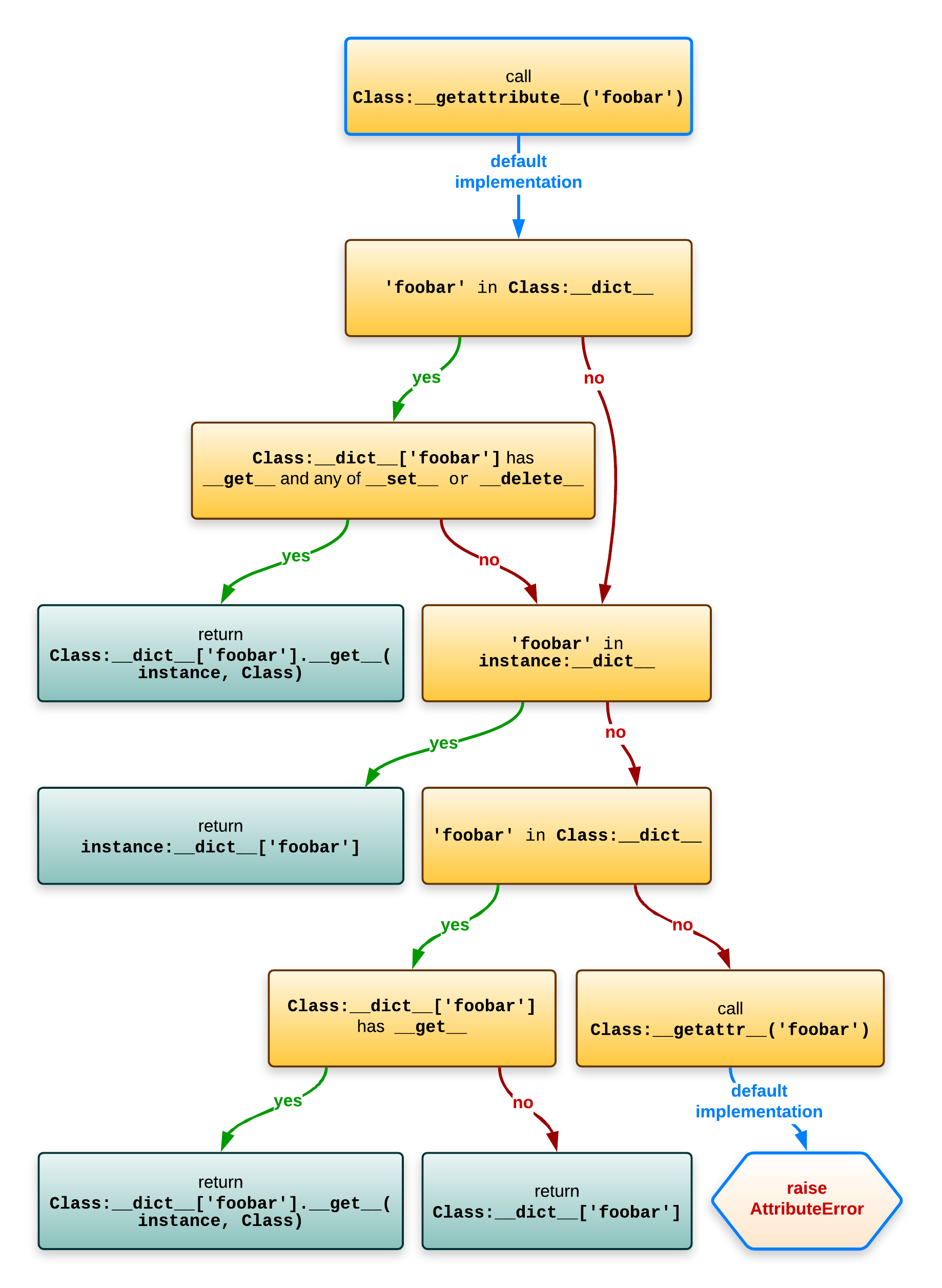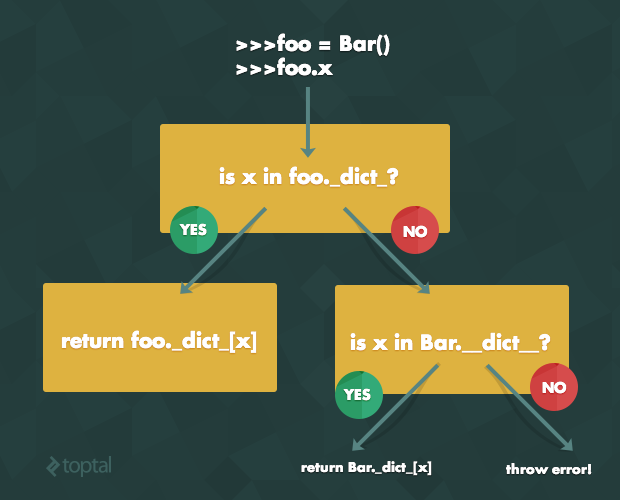Python Slots Class Attribute
Posted By admin On 31/03/22On the class-level, each slot has as a descriptor that knows its unique position in the instance list. There is a good explanation of how it works by Raymond Hettinger. Although it was written 10 years ago, the concept stays the same. Bonus: function attributes. Python's dictionary is so fundamental to Python, that many other objects using it too. Class MyClass: # You can optionally declare instance variables in the class body attr: int # This is an instance variable with a default value chargepercent: int = 100 # The 'init' method doesn't return anything, so it gets return # type 'None' just like any other method that doesn't return anything def init (self)- None.
This document is a quick cheat sheet showing how the PEP 484 typeannotation notation represents various common types in Python 3.
Note
Technically many of the type annotations shown below are redundant,because mypy can derive them from the type of the expression. Somany of the examples have a dual purpose: show how to write theannotation, and show the inferred types.
Variables¶

Python 3.6 introduced a syntax for annotating variables in PEP 526and we use it in most examples.
Built-in types¶
Functions¶
Python 3 supports an annotation syntax for function declarations.
When you’re puzzled or when things are complicated¶
Standard “duck types”¶
In typical Python code, many functions that can take a list or a dictas an argument only need their argument to be somehow “list-like” or“dict-like”. A specific meaning of “list-like” or “dict-like” (orsomething-else-like) is called a “duck type”, and several duck typesthat are common in idiomatic Python are standardized.
Classes¶
Coroutines and asyncio¶
See Typing async/await for the full detail on typing coroutines and asynchronous code.
Miscellaneous¶
Decorators¶
Decorator functions can be expressed via generics. SeeDeclaring decorators for the more details.
Next Chapter: Implementing a Property Decorator
Properties vs. Getters and Setters
Properties
Getters(also known as 'accessors') and setters (aka. 'mutators') are used in many object oriented programming languages to ensure the principle of data encapsulation. Data encapsulation - as we have learnt in our introduction on Object Oriented Programming of our tutorial - is seen as the bundling of data with the methods that operate on them. These methods are of course the getter for retrieving the data and the setter for changing the data. According to this principle, the attributes of a class are made private to hide and protect them from the other codes.
Unfortunately, it is widespread belief that a proper Python class should encapsulate private attributes by using getters and setters. As soon as one of these programmers introduces a new attribute, he or she will make it a private variable and creates 'automatically' a getter and a setter for this attributes. Such programmers may even use an editor or an IDE, which automatically creates getters and setters for all private attributes. These tools even warn the programmer if she or he uses a public attribute! Java programmers will wrinkle their brows, screw up their noses, or even scream with horror when they read the following: The Pythonic way to introduce attributes is to make them public.
We will explain this later. First, we demonstrate in the following example, how we can design a class in a Javaesque way with getters and setters to encapsulate the private attribute self.__x:
We can see in the following demo session how to work with this class and the methods:
What do you think about the expression 'p1.set_x(p1.get_x()+p2.get_x())'? It's ugly, isn't it? It's a lot easier to write an expression like the following, if we had a public attribute x:
Such an assignment is easier to write and above all easier to read than the Javaesque expression.
Let's rewrite the class P in a Pythonic way. No getter, no setter and instead of the private attribute self.__x we use a public one:
Beautiful, isn't it? Just three lines of code, if we don't count the blank line!
'But, but, but, but, but ... ', we can hear them howling and screaming, 'But there is NO data ENCAPSULATION!'Yes, in this case there is no data encapsulation. We don't need it in this case. The only thing get_x and set_x in our starting example did was 'getting the data through' without doing anything.
But what happens if we want to change the implementation in the future? This is a serious argument. Let's assume we want to change the implementation like this: The attribute x can have values between 0 and 1000. If a value larger than 1000 is assigned, x should be set to 1000. Correspondingly, x should be set to 0, if the value is less than 0.
It is easy to change our first P class to cover this problem. We change the set_x method accordingly:
The following Python session shows that it works the way we want it to work:
But there is a catch: Let's assume we designed our class with the public attribute and no methods. People have already used it a lot and they have written code like this:
Our new class means breaking the interface. The attribute x is not available anymore. That's why in Java e.g. people are recommended to use only private attributes with getters and setters, so that they can change the implementation without having to change the interface.

But Python offers a solution to this problem. The solution is called properties!
The class with a property looks like this:
A method which is used for getting a value is decorated with '@property', i.e. we put this line directly in front of the header. The method which has to function as the setter is decorated with '@x.setter'. If the function had been called 'f', we would have to decorate it with '@f.setter'.Two things are noteworthy: We just put the code line 'self.x = x' in the __init__ method and the property method x is used to check the limits of the values. The second interesting thing is that we wrote 'two' methods with the same name and a different number of parameters 'def x(self)' and 'def x(self,x)'. We have learned in a previous chapter of our course that this is not possible. It works here due to the decorating:
Alternatively, we could have used a different syntax without decorators to define the property. As you can see, the code is definitely less elegant and we have to make sure that we use the getter function in the __init__ method again:
There is still another problem in the most recent version. We have now two ways to access or change the value of x: Either by using 'p1.x = 42' or by 'p1.set_x(42)'. This way we are violating one of the fundamentals of Python: 'There should be one-- and preferably only one --obvious way to do it.' (see Zen of Python)
We can easily fix this problem by turning the getter and the setter methods into private methods, which can't be accessed anymore by the users of our class P:
Even though we fixed this problem by using a private getter and setter, the version with the decorator '@property' is the Pythonic way to do it!
From what we have written so far, and what can be seen in other books and tutorials as well, we could easily get the impression that there is a one-to-one connection between properties (or mutator methods) and the attributes, i.e. that each attribute has or should have its own property (or getter-setter-pair) and the other way around. Even in other object oriented languages than Python, it's usually not a good idea to implement a class like that. The main reason is that many attributes are only internally needed and creating interfaces for the user of the class increases unnecessarily the usability of the class. The possible user of a class shouldn't be 'drowned' with umpteen - of mainly unnecessary - methods or properties!
The following example shows a class, which has internal attributes, which can't be accessed from outside. These are the private attributes self.__potential_physical and self.__potential_psychic. Furthermore we show that a property can be deduced from the values of more than one attribute. The property 'condition' of our example returns the condition of the robot in a descriptive string. The condition depends on the sum of the values of the psychic and the physical conditions of the robot.
Public instead of Private Attributes
Let's summarize the usage of private and public attributes, getters and setters, and properties: Let's assume that we are designing a new class and we pondering about an instance or class attribute 'OurAtt', which we need for the design of our class. We have to observe the following issues:
- Will the value of 'OurAtt' be needed by the possible users of our class?
- If not, we can or should make it a private attribute.
- If it has to be accessed, we make it accessible as a public attribute
- We will define it as a private attribute with the corresponding property, if and only if we have to do some checks or transformation of the data. (As an example, you can have a look again at our class P, where the attribute has to be in the interval between 0 and 1000, which is ensured by the property 'x')
- Alternatively, you could use a getter and a setter, but using a property is the Pythonic way to deal with it!
Let's assume we defined 'OurAtt' as a public attribute. Our class has been successfully used by other users for quite a while. Now comes the point which frightens some traditional OOPistas out of their wits: Imagine 'OurAtt' has been used as an integer. Now, our class has to ensure that 'OurAtt' has to be a value between 0 and 1000? Without property, this is really a horrible scenario! Due to properties it's easy: We create a property version of 'OurAtt'.
This is great, isn't it? You can start with the simplest implementation imaginable, and you are free to later migrate to a property version without having to change the interface! So properties are not just a replacement for getters and setters!
Something else you might have already noticed: For the users of a class, properties are syntactically identical to ordinary attributes.

Next Chapter: Implementing a Property Decorator